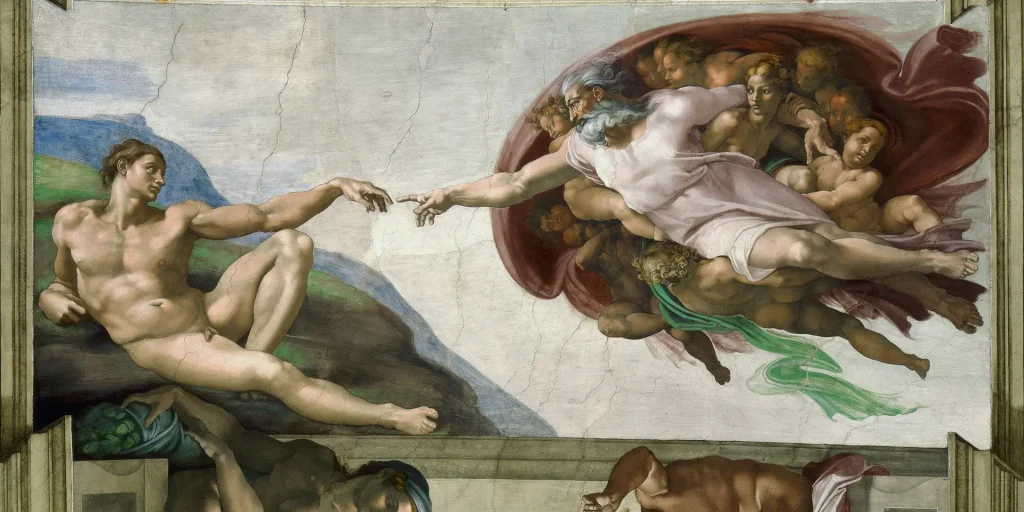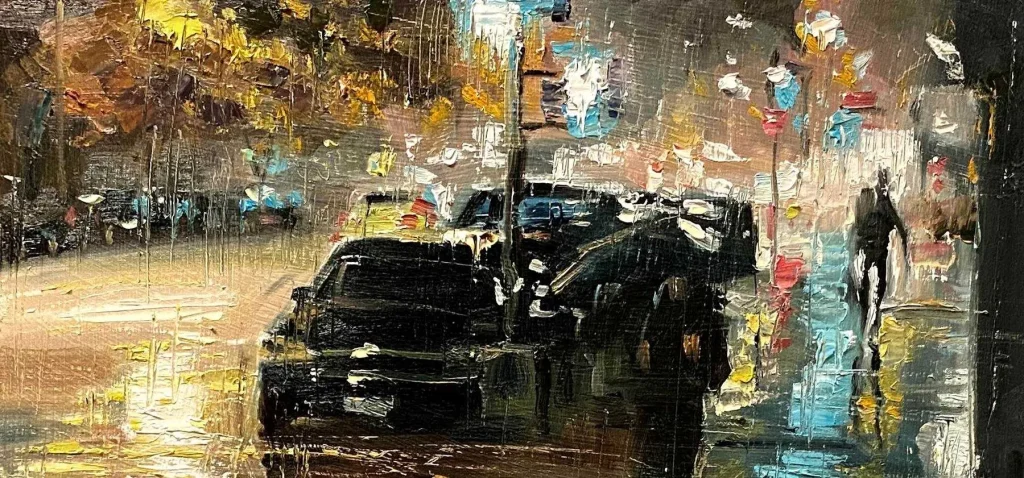Artistic movements reflect the dynamic nature of human creativity and the evolving cultural contexts in which they arise. From the grandeur of Renaissance art to the radical experimentation of contemporary practices, each movement has contributed to the rich tapestry of art history. This article explores the evolution of key artistic movements, examining their origins, characteristics, and lasting impact.

Renaissance (14th–17th Century)
The Renaissance, meaning “rebirth,” marked a profound transformation in art, driven by a renewed interest in classical antiquity and humanism. Originating in Italy, this movement emphasized realism, perspective, and the study of anatomy. Artists like Leonardo da Vinci, Michelangelo, and Raphael were central to this period, producing works that explored the human condition and natural world with unprecedented detail and depth.
The Renaissance also saw advancements in techniques such as linear perspective, which created the illusion of depth on a flat surface, and sfumato, a method of blending colors and tones. The movement’s focus on the individual and the natural world set the stage for future artistic exploration and innovation.
Baroque (17th–18th Century)
Following the Renaissance, the Baroque period emerged with a dramatic, emotional, and dynamic style. Characterized by grandeur, movement, and tension, Baroque art often featured bold contrasts of light and shadow, known as chiaroscuro. Artists like Caravaggio, Rembrandt, and Peter Paul Rubens exemplified the Baroque aesthetic through their intense compositions and vivid storytelling.
The Baroque movement was not only an artistic response to the Renaissance but also a reflection of the turbulent social and political climate of the time. Its emphasis on dramatic effect and theatricality can be seen in the elaborate decorations of churches and palaces, as well as in the emotional intensity of its subjects.
Rococo (18th Century)
Rococo, also known as Late Baroque, emerged in France as a reaction against the grandeur and rigidity of Baroque art. This movement is characterized by its playful, ornate, and light-hearted style, with an emphasis on elegance, whimsy, and the use of pastel colors. Artists such as François Boucher, Jean-Honoré Fragonard, and Watteau exemplified the Rococo aesthetic with their depictions of frivolous themes and scenes of leisure.
Rococo art often focused on themes of romance and aristocratic life, reflecting the opulence and excesses of the French court. The movement’s emphasis on beauty and charm marked a shift towards more personal and intimate expressions in art.
Neoclassicism (18th–19th Century)
Neoclassicism arose as a reaction to the Rococo style and sought to return to the ideals of classical antiquity. Emphasizing simplicity, symmetry, and moral seriousness, Neoclassical artists drew inspiration from ancient Greek and Roman art and architecture. Jacques-Louis David, Jean-Auguste-Dominique Ingres, and Antonio Canova were prominent figures in this movement, producing works that conveyed themes of heroism, virtue, and rationality.
The Neoclassical movement was closely linked to the Enlightenment, a period of intellectual and cultural advancement that valued reason and classical ideals. This movement also set the stage for the subsequent Romantic era, which would challenge its ideals.

Romanticism (19th Century)
Romanticism emerged as a response to the constraints of Neoclassicism and the Industrial Revolution’s impact on society. This movement celebrated emotion, imagination, and the sublime aspects of nature, often depicting dramatic and exotic subjects. Artists like Eugène Delacroix, J.M.W. Turner, and Caspar David Friedrich explored themes of individualism, passion, and the power of nature in their work.
Romanticism placed a strong emphasis on personal expression and the exploration of intense feelings, often contrasting with the rationalism of the previous era. This movement’s focus on the emotional and the spiritual would influence later artistic developments and continue to resonate in contemporary art.
Impressionism (Late 19th Century)
Impressionism revolutionized the art world with its focus on capturing the fleeting effects of light and color. Emerging in France, this movement broke away from traditional techniques by using loose brushwork and a lighter color palette to depict everyday scenes and natural landscapes. Pioneered by artists such as Claude Monet, Edgar Degas, and Pierre-Auguste Renoir, Impressionism sought to convey the immediacy of visual experience and the artist’s perception of the moment.
The Impressionists’ emphasis on capturing the transient effects of light and atmosphere challenged conventional artistic norms and paved the way for subsequent modern art movements. Their innovative approach to painting influenced many aspects of art, including color theory and the perception of space.
Modernism (Late 19th–Mid 20th Century)
Modernism encompasses a range of artistic movements that emerged in response to rapid social and technological changes. It includes movements such as Cubism, pioneered by Pablo Picasso and Georges Braque, which fragmented forms into geometric shapes, and Surrealism, led by Salvador Dalí and René Magritte, which explored the unconscious mind and dream imagery.
Modernist artists sought to break away from traditional representations and experiment with new forms, techniques, and ideas. This period saw the rise of abstract art, with artists like Wassily Kandinsky and Jackson Pollock pushing the boundaries of visual expression. Modernism’s emphasis on innovation and experimentation set the stage for the diverse and dynamic art practices of the 20th and 21st centuries.
Contemporary Art (Mid 20th Century–Present)
Contemporary art reflects the diverse and global nature of the modern world. It encompasses a wide range of styles, media, and conceptual approaches, including Pop Art, Minimalism, Conceptual Art, and Digital Art. Artists such as Andy Warhol, Yayoi Kusama, and Banksy have explored themes of consumerism, identity, and technology through their work.
Contemporary art often challenges traditional notions of art and engages with social, political, and cultural issues. It includes diverse practices such as performance art, installation art, and virtual reality, reflecting the ever-evolving nature of artistic expression and the impact of global interconnectedness.

Conclusion
The evolution of artistic movements highlights the ever-changing landscape of human creativity and expression. From the classical ideals of the Renaissance to the innovative approaches of contemporary art, each movement has contributed to our understanding of art and its role in society. As we continue to explore new forms and ideas, the legacy of these artistic movements provides a rich foundation for future artistic endeavors and cultural dialogue.